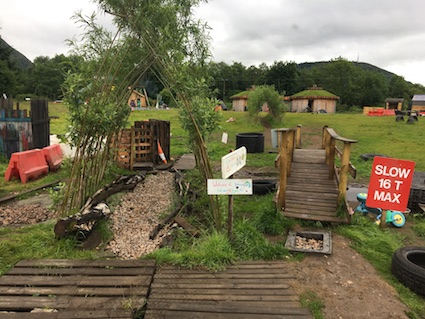
It is very easy when considering how to embed literacy and maths into an outdoor space to plump for sticking up an alphabet, words and numbers outside in various forms from bunting to letters to expensive signage. However this approach is rarely effective at engaging children in either reading, writing or maths other than if an adult makes a concerted effort and creates various structured activities or provocations to draw children’s attention to the symbols and words. Furthermore it runs the risk of lacking meaning or relevance to children. For me, it is an indication of the confidence levels and understanding of the adults about what is possible when it comes to creating a literacy or numeracy-rich outdoor space.
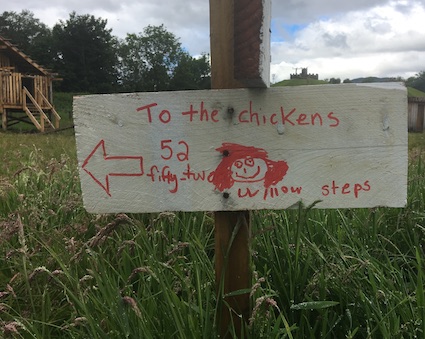
When visiting visiting Fort William and Elgin Stramash Outdoor Nurseries several years ago, one of many new developments in the past three months have been the appearance of various homemade signs. The ones you’ve seen so far are from Fort William. They are simple affairs which the children helped make and design. You can see that not all the nails are perfectly hammered in. 🙂
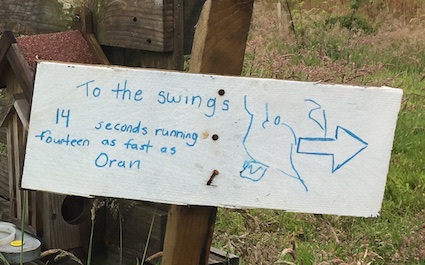
It was a spontaneous situation. Cameron, the Team Leader had been making a couple of signs to welcome visitors and new children, as part of the induction visits.
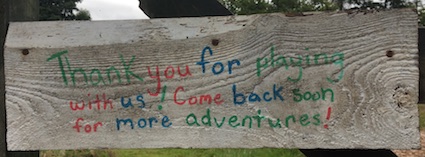
When the children were asked about where are good places to discover and visited around the site, they had plenty of suggestions. So a proliferation of signs were created.
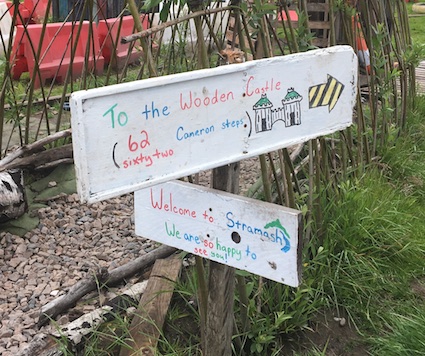
The children had to decide where the post should go and to where it should signpost visitors. Furthermore, they had to consider what sort of physical movement should be used as a non-standard unit of measure.
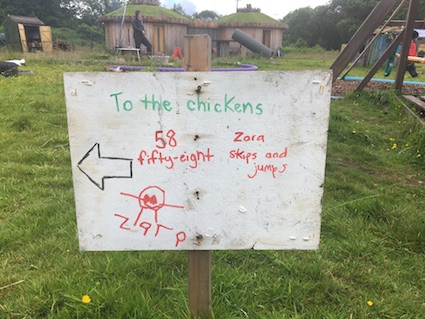
You can see that the children added their own marks if they wanted to. If you look at the signpost below, you can also see the gentle invitation to extend the writing. The “o” in “To” and the zero in 40 have been drawn by the child.
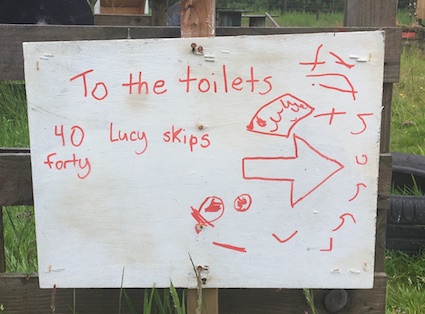
The children’s personality and interests can clearly be seen in the signs. Below, the child wanted to use metres and centimetres and was keen for very precise measurements to be used. (Please note, Cameron is American, hence the spelling):
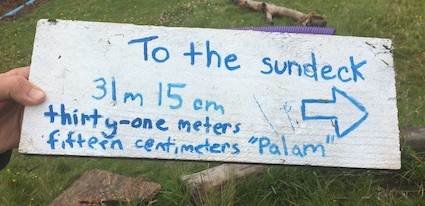
Many of these children will shortly be moving on to primary school. As such, they remain one of many legacies that these children will leave as a memory of themselves in this place. Yet the signs are also temporary affairs. At some point, some more children may decide that it’s time for their ideas to be put on the signage. A quick lick of paint and the process can easily happen again. Acrylic pens (the big thick ones that are easier to grip) were used so the signs will stay as they are for as long as needed.
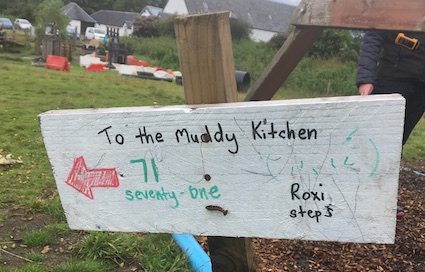
At Elgin Stramash, two signs I loved was one at the entrance which gives a clear indication of the values and expectations:
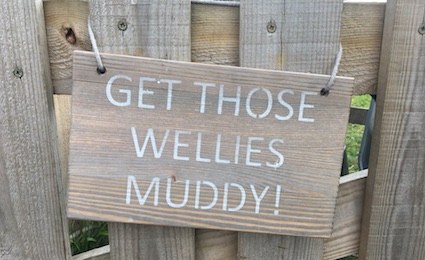
The other was this home-made blackboard which is created in a similar fashion to the Fort William signs – a hodgepodge of planks, covered in blackboard paint. Again, this was made by children for children with the support of an adult.

I hope these signs give you ideas and possibilities for what you can do in your setting to make environmental print personal and meaningful to the children you work with.
This post was originally published in 2018. Please note Cameron is American hence the font and spelling in the signs. It can be helpful to discuss handwritten fonts to be used with your feeder primary schools so there is a consistency of style as much as possible.




















Wow amazing blog !